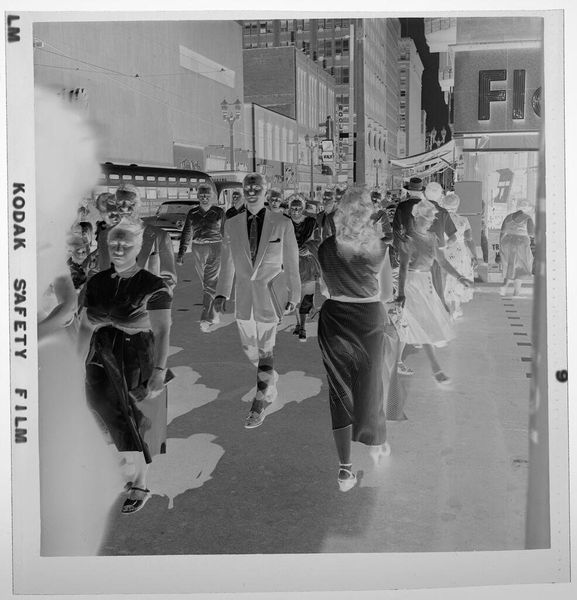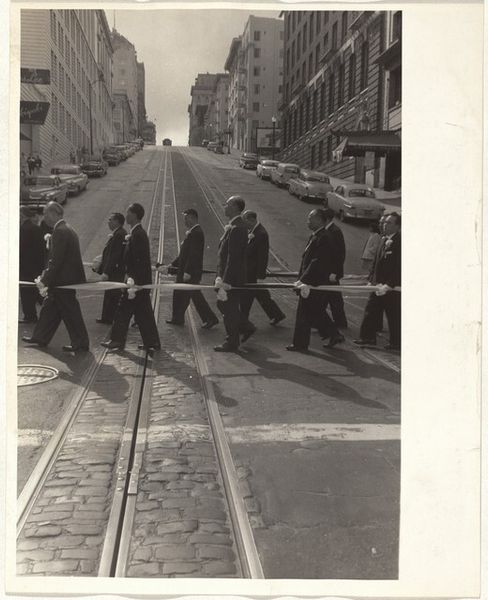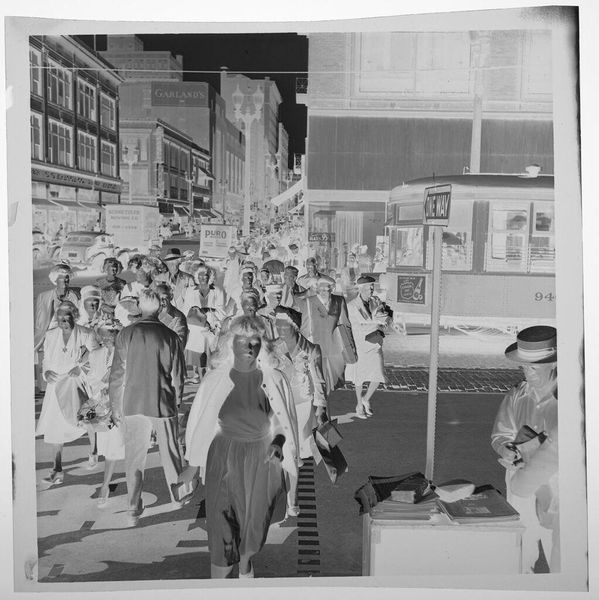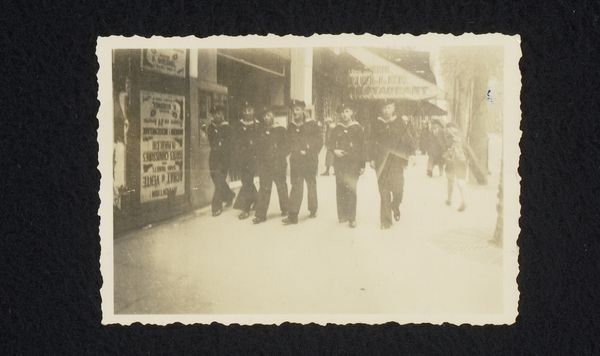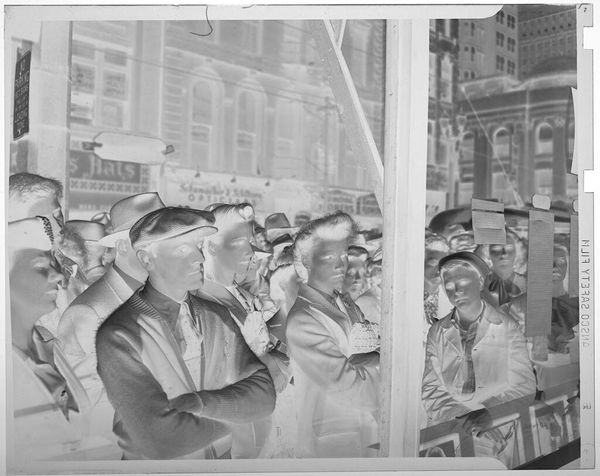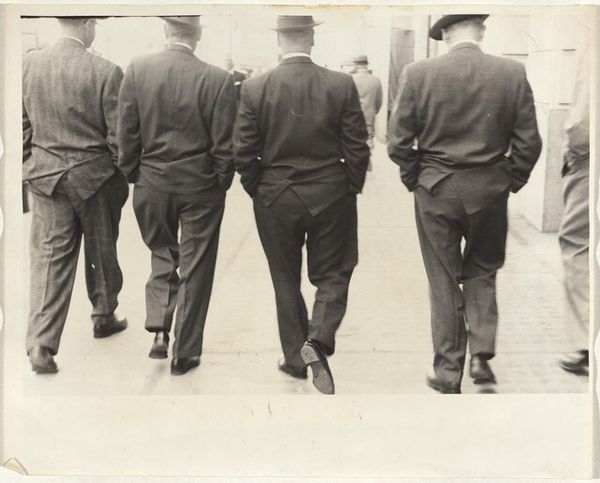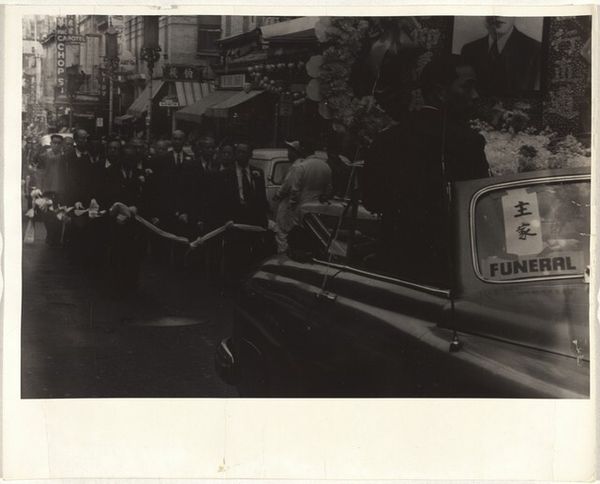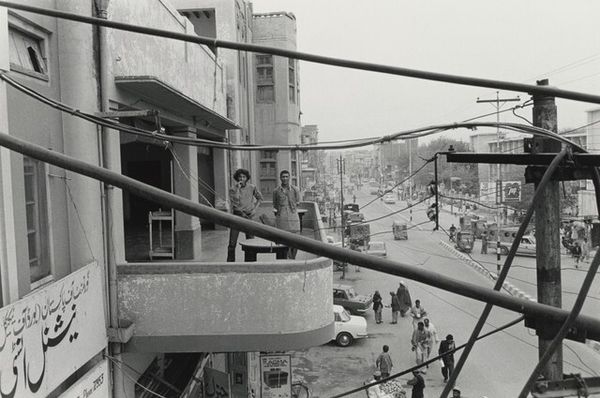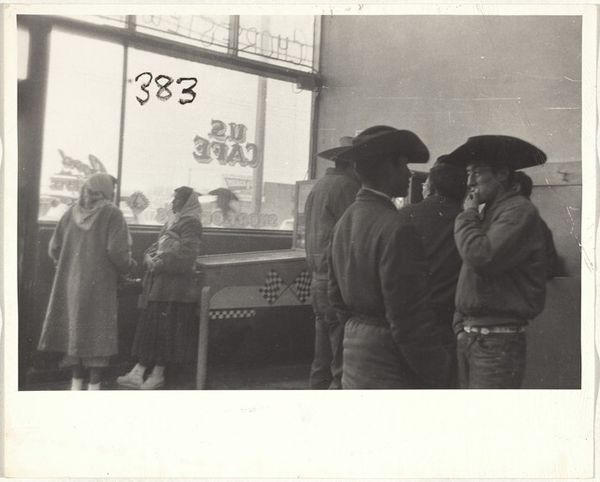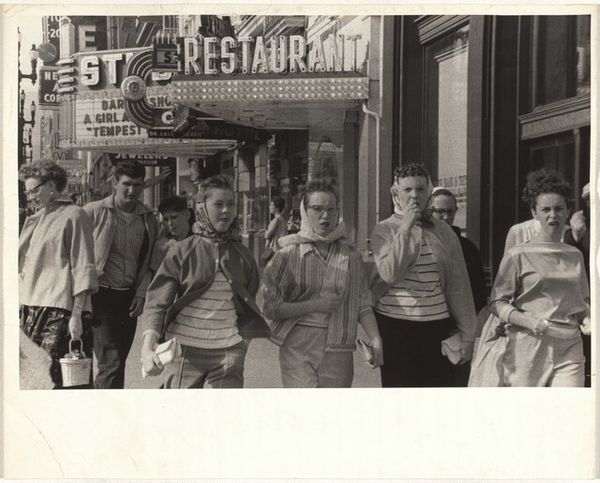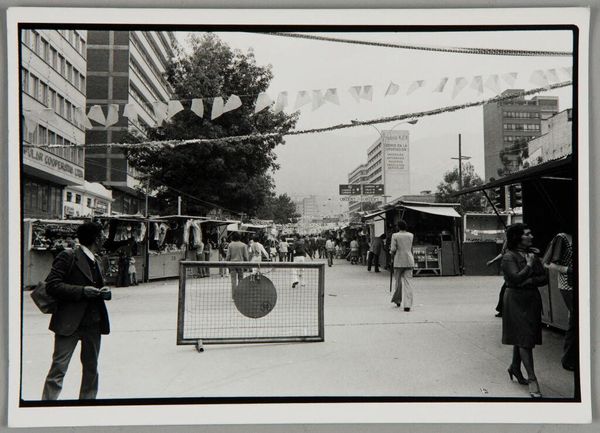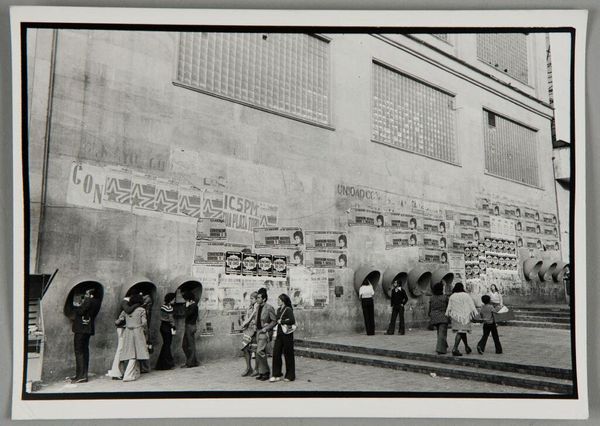
print, photography, gelatin-silver-print
#
portrait
#
print photography
# print
#
archive photography
#
street-photography
#
photography
#
historical photography
#
gelatin-silver-print
#
realism
Dimensions: sheet: 20.2 x 25.2 cm (7 15/16 x 9 15/16 in.)
Copyright: National Gallery of Art: CC0 1.0
Editor: This is Robert Frank's "Funeral—San Francisco," a gelatin silver print from 1956. There's a somberness to the image, this group of men in dark suits processing down a San Francisco street. What can you tell me about this photograph, especially regarding its historical and cultural context? Curator: Frank’s work often grapples with the complexities of American identity in the mid-20th century. Here, we see an Asian-American funeral procession, a visible subculture largely absent from mainstream representation at the time. This image becomes a poignant statement about cultural visibility and the often-overlooked realities within the American landscape. Editor: It seems to also hint at exclusion despite outward assimilation into American culture. What’s your perspective? Curator: Precisely. The men are wearing Western suits, a sign of assimilation, yet the funeral itself speaks to deeply rooted cultural traditions within their community. The signs in Chinese in the background further underscore the tension between integration and preservation of distinct cultural identities. What do you think Frank intended to convey by framing the procession so frontally, almost as if a film still? Editor: The directness forces the viewer to acknowledge the procession. The choice feels deliberate. Perhaps, he wants to visually disrupt the existing narratives of American life, inserting this specific cultural experience into a broader, more inclusive understanding. Curator: I think you’ve nailed it. This image pushes viewers to confront the diverse realities existing simultaneously in America. Frank documented what he saw without embellishment and leaves the interpretation open, even though he certainly had his own biases. This challenges us to question whose stories get told, whose get erased, and how the politics of representation play out in visual culture. Editor: Understanding the cultural currents makes Frank's photograph even more impactful. It's not just a record of a funeral, but a commentary on visibility and cultural identity within a specific socio-political moment. Curator: Precisely. And his unflinching portrayal made this seemingly simple scene, powerful. It makes you reconsider what defines a community's place and identity in this period, doesn't it?
Comments
No comments
Be the first to comment and join the conversation on the ultimate creative platform.
